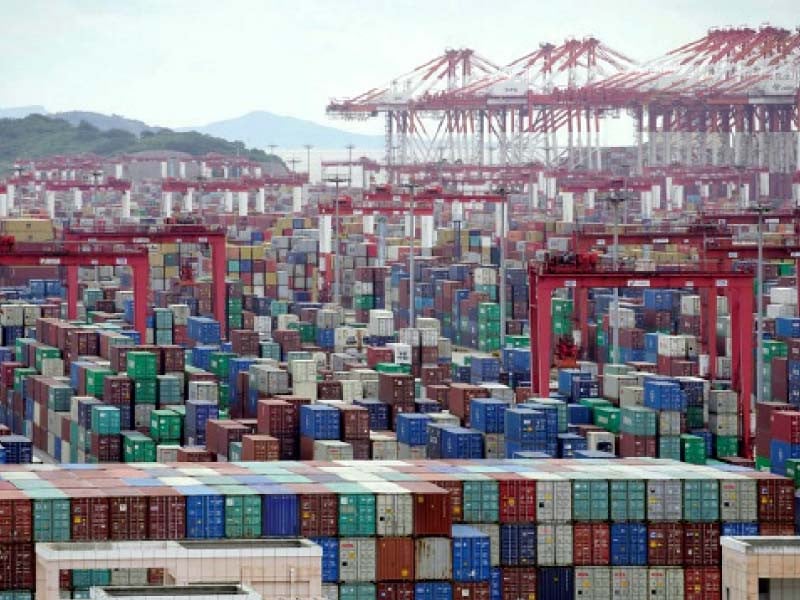
Pakistan’s trade deficit peaked to a record $35.4 billion in the first nine months of current fiscal year, which was even higher than the annual target of $28.4 billion set by the outgoing government of Prime Minister Imran Khan.
In March 2022, which marked the end of 43-month rule of Pakistan Tehreek-e-Insaf (PTI) government, there was a dip in exports and surge in imports over the preceding month - a trend that the government could not reverse in its tenure.
According to data released by the Pakistan Bureau of Statistics (PBS) on Monday, the trade deficit in July-March 2021-22 increased to $35.4 billion. It was $14.6 billion, or over 70%, more than the same period of previous year.
The annual trade deficit target had been set at $28.4 billion that had already been breached in the seventh month of current fiscal year, as imports remained far higher than the earlier estimates.
In the last year of PML-N government, the trade deficit had been recorded at $37 billion and now the PTI government has left behind a bigger mess to be cleared by the next government.
The growing deficit is taking a heavy toll on the foreign exchange reserves that are on a steep sliding path due to the widening current account deficit and increasing debt payments.
The central bank’s foreign currency reserves were constantly on the decline and dipped further to $12 billion till March 25 - not enough to cover two months of imports.
Imports in the July-March period of 2021-22 increased nearly by half to $58.7 billion. In absolute terms, imports grew $19.2 billion, according to the PBS.
The PTI government had set the annual import target at $55.2 billion, which it breached in the ninth month of current fiscal year. Higher global commodity prices is a major reason behind the surging imports.
The central bank has introduced a cash margin requirement (CMR) for the import of goods besides curtailing consumer financing to ease the pressure on imports. But these measures did not help.
The currency was also devalued by more than 50% to make imports expensive, however, the Ministry of Planning said last month that those measures were not proving effective in containing the current account deficit that had already widened to $12 billion in the first eight months of 2021-22.
Exports increased nearly 25% in the first nine months of current fiscal year and stood at $23.9 billion against $18.7 billion in the same period of previous year, according to the PBS.
Exports were equal to 89% of the annual target, thanks to the high global commodity prices that contributed most of the increase in exports.
In absolute terms, there was an increase of $4.6 billion in exports. The planning ministry’s half yearly report stated that out of the nearly $2 billion increase in textile exports in six months, the increase in quantity was negligible, which fetched just $343 million in additional income.
The Ministry of Commerce now projects that exports will touch $31 billion in the full fiscal year.
In March 2022, imports were recorded at $6.2 billion, showing an increase of $555 million, or 10%, compared to the same month a year ago, according to the PBS.
PBS stated that exports of goods stood at $2.74 billion in March, higher by nearly 16%, or $376 million, over the same month of previous year.
Consequently, the trade deficit widened over 5.5% year-on-year to $3.4 billion in March.
The government’s trade policies have been influenced by a few hand-picked exporters, who put pressure to take monetary benefits, keeping the export base narrow and restricted to a few sectors.
On a month-on-month basis, exports decreased 2.8% to $2.74 billion in March 2022 over February 2022, showing a reduction of $80 million.
In March, imports showed an increase of 4.7%, or $279 million, on a month-on-month basis. As a result, the trade deficit increased to $3.14 billion in March, up nearly 12%, or $359 million, on a month-on-month basis.
Former commerce adviser Abdul Razak Dawood remained unable to bring sustainable improvement in exports despite doling out billions of rupees in subsidies to the industrialists.
He also opposed giving targeted subsidies on exports and instead strongly supported the policy of giving subsidies to exporters on gas and electricity.
Published in The Express Tribune, April 5th, 2022.
Like Business on Facebook, follow @TribuneBiz on Twitter to stay informed and join in the conversation.






1719053250-0/BeFunky-collage-(5)1719053250-0-270x192.webp)












COMMENTS
Comments are moderated and generally will be posted if they are on-topic and not abusive.
For more information, please see our Comments FAQ